VOICE OF FLAME
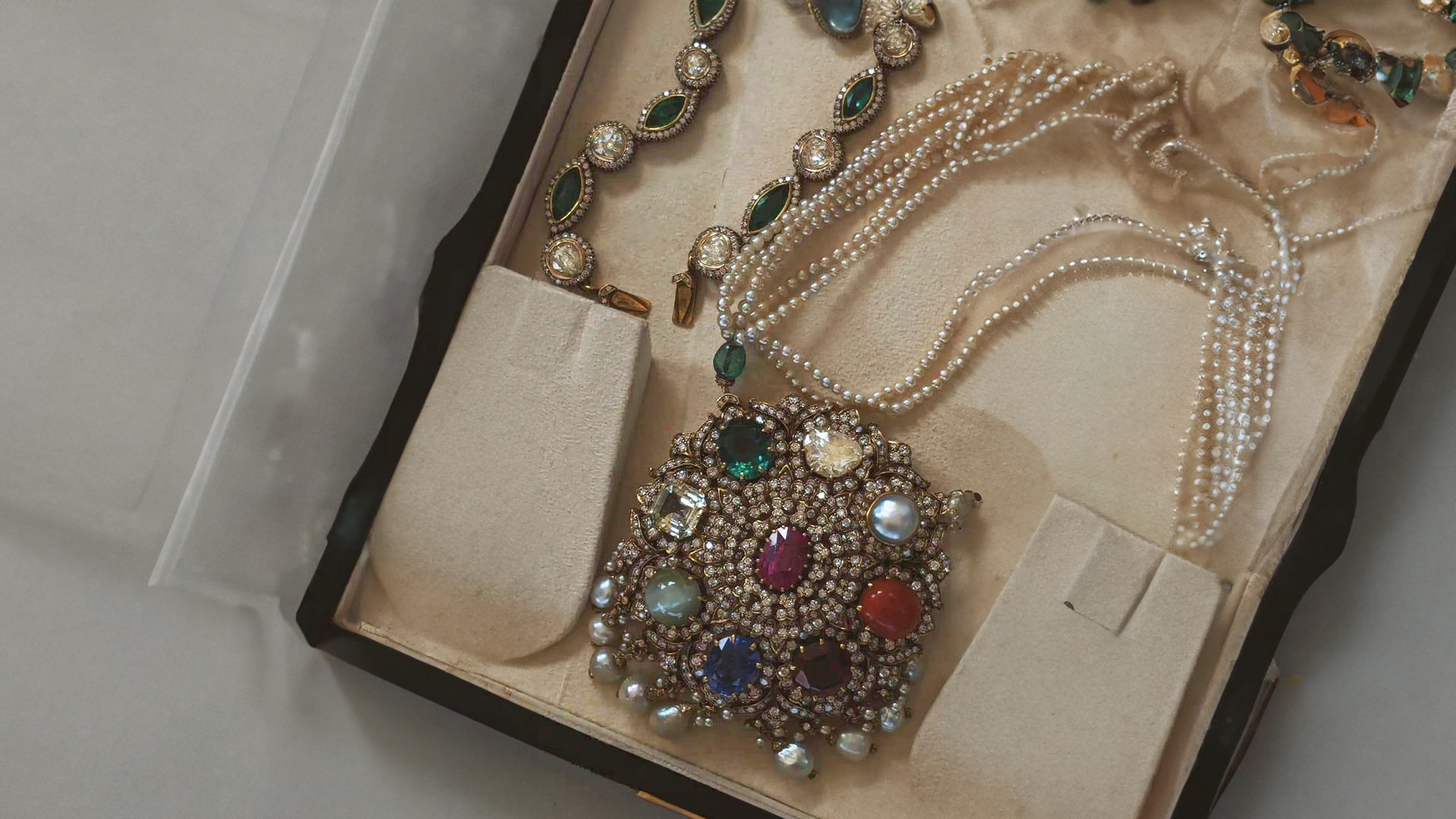

Kundan - Jaipur ka Gehna | Discover India Program
Jewelry holds immense cultural significance in India, woven into our history and traditions. It symbolizes not just wealth and status, but also spirituality, love, and heritage. From intricate temple jewelry to exquisite bridal adornments, each piece tells a story of craftsmanship and regional diversity. Passed down through generations, Indian jewelry connects us to our roots, celebrating the artistry and timeless beauty of our culture.
One of the most prominent and popular hand-made forms of jewelry in India is the Kundan-Meenakari jewelry of Rajasthan. Recognizing the rich history and exquisite artistry of Kundan jewelry, my team and I selected this area of study for our research project as part of the Discover India Program (DIP). Through comprehensive secondary research, we identified significant gaps in the existing literature, particularly concerning the impact of modernization on this art form and its artisans, as well as the role of Kundan jewelry in the historical and cultural evolution of Jaipur. Aiming to address these overlooked aspects, we embarked on an in-depth study to explore and document this fascinating tradition.
Exploring the Rich Heritage and Terminology of Kundan Jewelry
The Kundan jewelry industry, renowned for its intricate designs and historical significance, has evolved through various dynasties. Initially crafted for royalty, it gained prominence during the Mughal era. Subsequently, the fusion of Hindu and Persian cultures led to the inception of Meenakari in Kundan. This art form has since become a symbol of cultural pride, maintaining its traditional essence while adapting to modern tastes.
Over time, the Kundan jewelry industry has adapted to modernity while preserving its deep-rooted craftsmanship and historical legacy. From advancements in production techniques to innovative marketing strategies, modernization has influenced various facets of the industry, while still maintaining the authenticity and allure of this art form.
Our research identified a significant misunderstanding regarding the terminology associated with Kundan jewelry among customers. The term "Kundan" originates from the Sanskrit word "kund," meaning pure gold, specifically referring to the use of 24-karat gold in crafting these pieces. "Polki" denotes the flat-cut diamonds set within the Kundan, characterized by their unique slice-like appearance. Additionally, "Meenakari" refers to the intricate enamel work applied to the reverse side of Kundan jewelry. These distinctions are crucial for appreciating the unique aspects of Kundan jewelry.
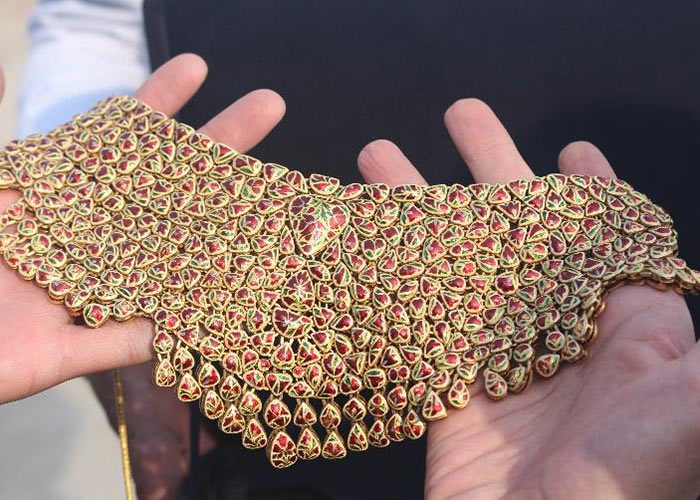
Meenakari – Enamel Work on the reverse side of the jewelry piece

Polki - Flat Cut Diamonds
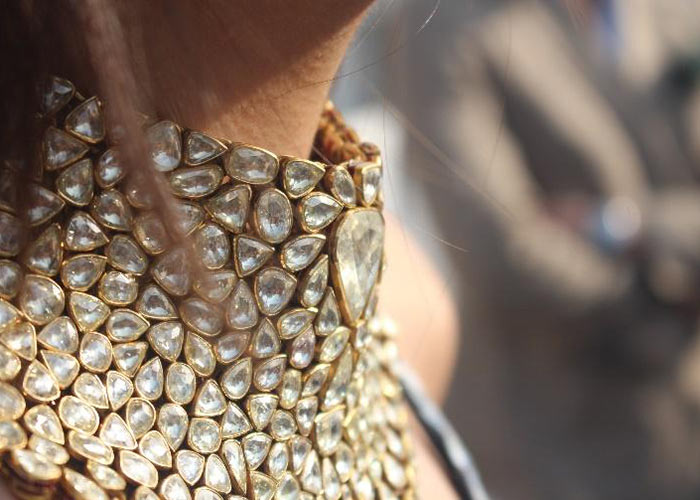
Kundan – Gold Foil Work
The Intricate Craftsmanship and Design Process of Kundan Meenakari Jewelry
Our research led us to discover one of the most fascinating aspects of Kundan Meenakari jewelry - its craftsmanship and unique design. Creating these pieces involves a meticulous process refined over generations, blending traditional techniques with skilled artistry. The creation of Kundan jewelry follows a structured 6-step process:
- Design and Molding
- Soldering and Assembly
- Meenakari - Enamel Work
- Jadau - Gemstone Setting
- Kundan - Gold Foil Setting
- Finishing Touches
While modern technology, such as Computer-Aided Design (CAD) for initial molds and laser soldering, has been integrated for efficiency and cost-effectiveness, traditional Kundan jewelry remains predominantly handmade, ensuring each piece retains its unique craftsmanship and artistic integrity, reflecting the heritage and cultural significance of this timeless art form.
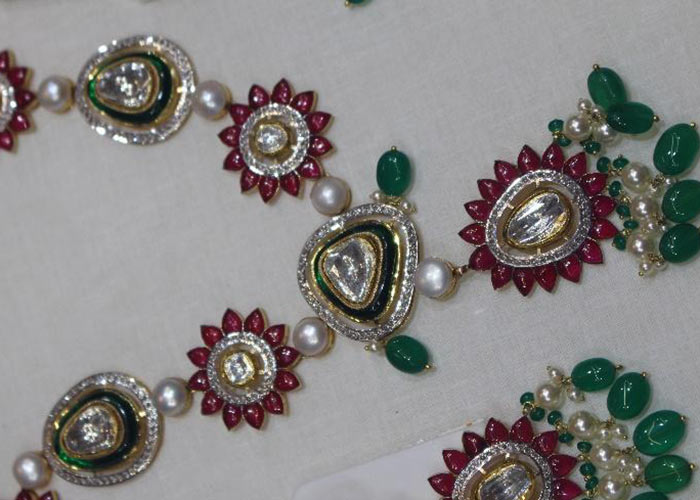
CAD Created Kundan Jewellery
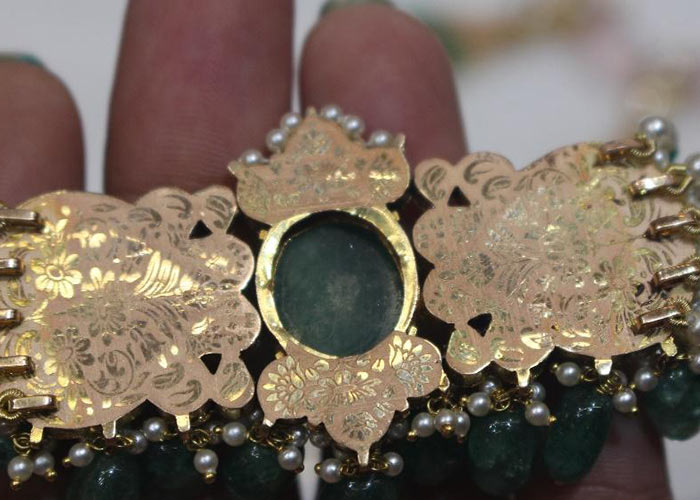
Laser Etching as an alternative to traditional Meenakari Enamel work
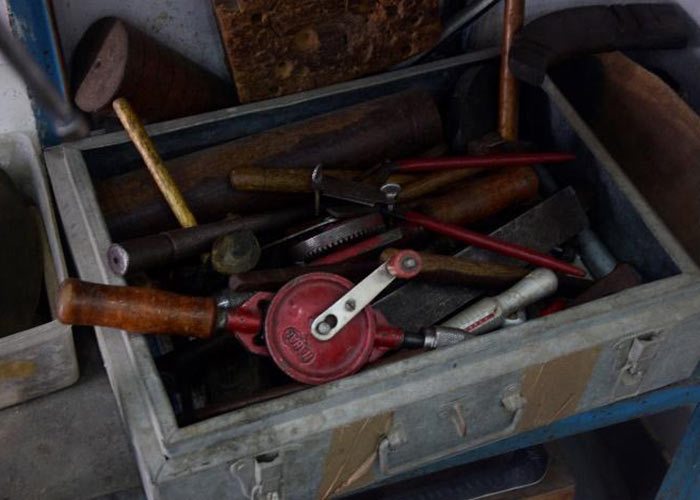
Traditional tools used today
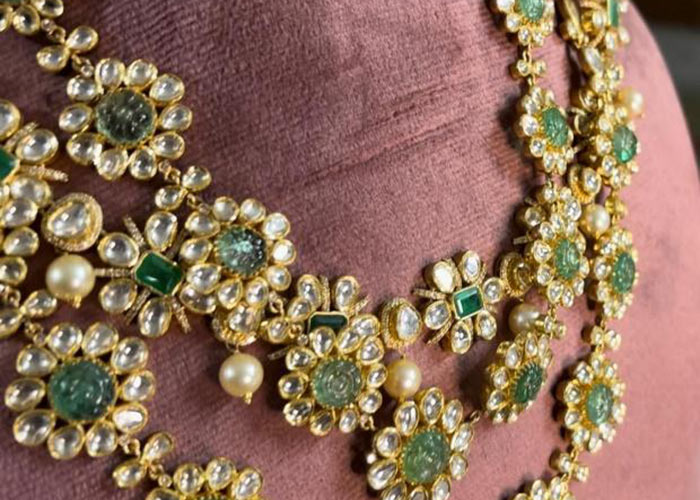
Flower Motifs
Drawing inspiration from nature's vast beauty, artisans craft pieces that embody its essence. Motifs like peacocks and floral patterns are particularly favored while designing this jewelry. Emerald, Sapphire, and Ruby are the most common gemstones used, with emeralds currently favored for their versatile green hue that complements a wide range of colors.
The Impact of CAD on Kundan Jewelry Production and Market Dynamics
Computer-aided Design (CAD) has significantly boosted production capacity. Following interviews with numerous jewelry houses, a clear trend emerged: the majority have adopted CAD for Kundan production. This widespread adoption suggests a potential decrease in Kundan prices due to heightened supply, posing a competitive challenge for producers. Therefore, overcoming this challenge depends on identifying a unique selling proposition (USP) that distinguishes their offerings in the marketplace.
Challenges and Adaptations: The Evolving Role of Artisans in the Kundan Jewelry Industry
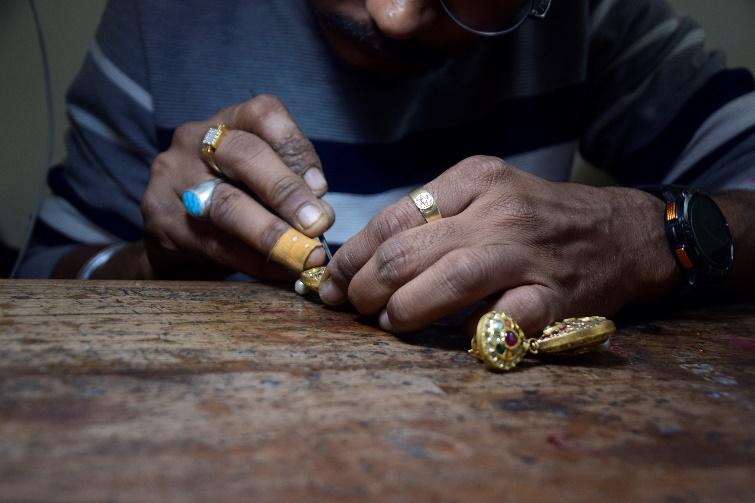 The impact on various stakeholders in the Kundan jewelry industry is profound and multifaceted, with artisans, known as karigars, experiencing significant challenges. These craftsmen, crucial to the heritage and production of Kundan jewelry, face broader shifts in societal and economic landscapes. Traditionally, the art of Kundan making has been passed down through generations within families in Jaipur, where artisans learned from their ancestors. However, there is a noticeable decline in the number of young artisans willing to pursue this traditional career path. This trend is partly attributed to increasing literacy rates and aspirations for white-collar jobs among younger generations. The COVID-19 pandemic further exacerbated the challenges faced by Kundan artisans. Before the pandemic, Jaipur's jewelry industry was flourishing; however, the subsequent economic downturn significantly impacted sales and employment opportunities. Many artisans, who are typically compensated hourly, experienced substantial income reductions or unemployment as workshops scaled back their operations. Despite these setbacks, there remains cautious optimism among artisans, who believe in the enduring socio-cultural significance of Kundan jewelry, especially its popularity in bridal adornment.
The impact on various stakeholders in the Kundan jewelry industry is profound and multifaceted, with artisans, known as karigars, experiencing significant challenges. These craftsmen, crucial to the heritage and production of Kundan jewelry, face broader shifts in societal and economic landscapes. Traditionally, the art of Kundan making has been passed down through generations within families in Jaipur, where artisans learned from their ancestors. However, there is a noticeable decline in the number of young artisans willing to pursue this traditional career path. This trend is partly attributed to increasing literacy rates and aspirations for white-collar jobs among younger generations. The COVID-19 pandemic further exacerbated the challenges faced by Kundan artisans. Before the pandemic, Jaipur's jewelry industry was flourishing; however, the subsequent economic downturn significantly impacted sales and employment opportunities. Many artisans, who are typically compensated hourly, experienced substantial income reductions or unemployment as workshops scaled back their operations. Despite these setbacks, there remains cautious optimism among artisans, who believe in the enduring socio-cultural significance of Kundan jewelry, especially its popularity in bridal adornment.
The decline in popularity of Meenakari jewelry, characterized by intricate enamel work often seen on the backside of Kundan pieces, has also impacted artisan employment. As demand for these elaborate styles decreases in favor of simpler, open-setting designs, artisans specializing in Meenakari have faced reduced job opportunities. Some jewelry houses have responded by outsourcing Meenakari work on a made-to- order basis, further limiting traditional artisan employment within their workshops. Technological advancements, notably the adoption of Computer-Aided Design (CAD), have revolutionized production processes in the Kundan industry. While CAD has streamlined manufacturing and increased production efficiency, it has not significantly reduced the need for skilled artisans. Instead, artisans have adapted to roles that complement CAD technologies, ensuring that craftsmanship and artistic integrity are preserved alongside technological advancements.
Balancing Tradition and Modernization
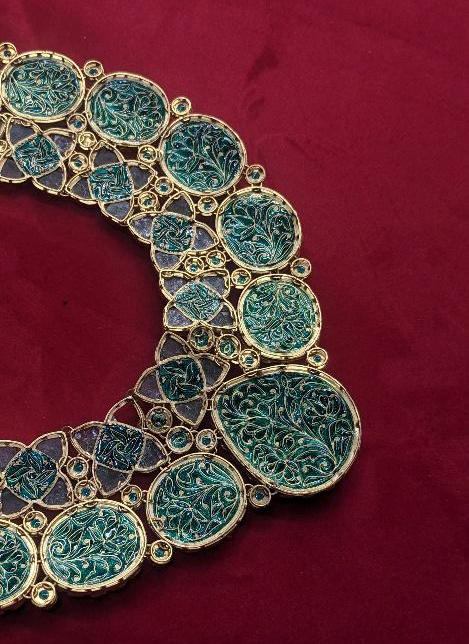 Modernization is deeply embedded in the Kundan jewelry industry, making it difficult to trace causality within a short research period. The industry values preserving the essence of Kundan jewelry while adapting to technological advancements. Businesses focus on communication, customer understanding, and marketing strategies to drive revenue.
Modernization is deeply embedded in the Kundan jewelry industry, making it difficult to trace causality within a short research period. The industry values preserving the essence of Kundan jewelry while adapting to technological advancements. Businesses focus on communication, customer understanding, and marketing strategies to drive revenue.
The industry as a whole, values its belief in preserving the essence of Kundan jewellery by honouring the original processes. The trademark 6-step process is still followed even today. However, adaptations in technology have occurred to preserve minute aspects of quality while managing the costs and resources of the business. Similarly, the jewelry design has been kept fairly intact to its roots.
This entrenched modernization has been evident in the way Kundan is distributed in the present day, which is through registered businesses and corporations. Apart from the jewelry itself, businesses have started looking at these main features for fruitful revenue:
- Medium of communication and sale
- Types of customers
- Strategies for marketing cues at each step of the customer journey
Discover India Program: The Enduring Beauty and Legacy byof Kundan Jewelry
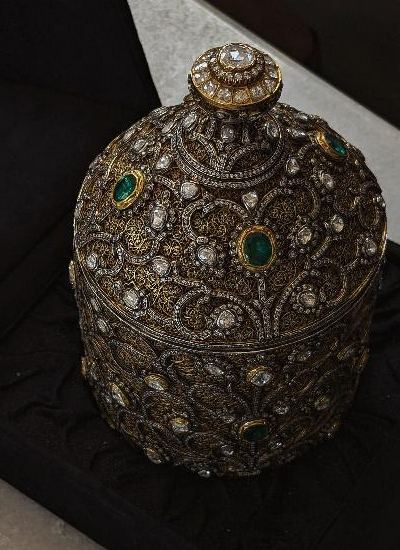 It is widely acknowledged that while learning from personal experiences is prudent, acquiring knowledge from the experiences of others is even more sagacious. This research project has presented us with the opportunity to do precisely that. We not only gained comprehensive knowledge about the art of Kundan jewelry through this project but also connected deeply with the community that continues to preserve this traditional craft. The artisans we interacted with displayed remarkable passion and dedication to their work, showcasing the intricate skill and creativity involved in Kundan jewelry making. The business owners we interviewed were immensely knowledgeable in their field, offering invaluable insights into the industry's dynamics and challenges.
It is widely acknowledged that while learning from personal experiences is prudent, acquiring knowledge from the experiences of others is even more sagacious. This research project has presented us with the opportunity to do precisely that. We not only gained comprehensive knowledge about the art of Kundan jewelry through this project but also connected deeply with the community that continues to preserve this traditional craft. The artisans we interacted with displayed remarkable passion and dedication to their work, showcasing the intricate skill and creativity involved in Kundan jewelry making. The business owners we interviewed were immensely knowledgeable in their field, offering invaluable insights into the industry's dynamics and challenges.
The most profound lesson from this project is the unparalleled beauty of handcrafted creations. Unlike machine-made products, handmade pieces possess a unique charm and perfection that stems from the human touch. This experience has underscored the importance of preserving and valuing traditional crafts, and it has deepened our appreciation for the artisans' unwavering commitment to their art. Ultimately, this project has reinforced the idea that the essence of true beauty lies in imperfections and individuality, a lesson that extends beyond the realm of Kundan jewelry to all aspects of life.
Team members: Shardul Gupta, Natasha Tejal, Samichi Rungta, Juhi Lakhani, Ishan Chaudhuri, Aastha Shah, Falak Shah, Ayush Sethi, Ananya Tiwari, Gitali Joshi, Riti Pani, Kaustubh Agrawal
(Author: Navya Mehra, Undergraduate Student)






